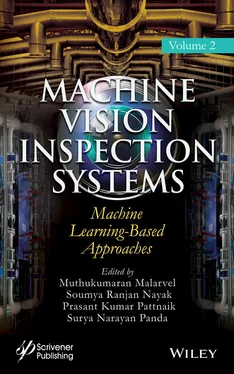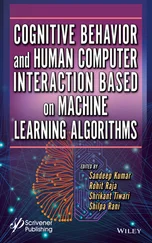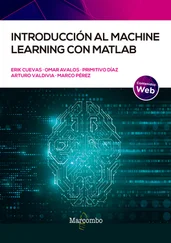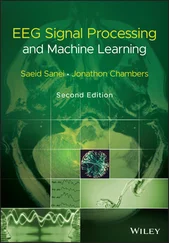Chapter 2focused to identify and differentiate handwriting characters using deep neural networks. As a solution to the character recognition problem in low resource languages, this chapter proposes a model that replicates the human cognition ability to learn with small datasets. The proposed solution is a Siamese neural network which bestows capsules and convolutional units to get a thorough understanding of the image. Further, this chapter attests that the capsule-based Siamese network could learn abstract knowledge about different characters which could be extended to unforeseen characters.
Chapter 3presented Optics growth with the development of lens in terms of accuracy. The 4f-based optical system is used as a benchmark to develop a firm system for medical applications. This method performing transforms with the optical system helps in improving accuracy. The image of the patient placed in the object plane is exposed to optical rays, the biconvex lens between the object and Fourier Plane performs an optical Fourier transform. This system indicating the normal or abnormal condition of the patient and helps in high-speed pattern recognition with optical signals.
Chapter 4studied about brain tumor diagnosis process on digital images using a convolutional neural network (CNN) as a part of the deep learning model. To classification of brain tumors, eight different CNN models were tested on magnetic resonance imaging (MRI). Additionally, the detailed discussion on machine learning algorithms and deep learning techniques is presented.
Chapter 5focused on optical character recognition. In this chapter, the detailed study was presented on handwritten identification and classification techniques and their applications. Furthermore, this chapter discussed their limitations along with an overview of the precision rate of Artificial Neural Network-based approaches.
Chapter 6presented an automated process of detection of defects on wood or metal surface. Generally, monitoring the quality of raw material plays a crucial role in the production of a quality product. Therefore, this chapter developed the classification model using the multiclass support vector machine to identify the defected present into the wood.
Chapter 7focused computational linguistics towards text recognition and synthesis, speech recognition and synthesis, and conversion between text to speech and vice versa. This chapter branches out towards a text- to-speech system (TTS) which is used for conversion of natural language text into speech distinguishing itself from other systems that render symbolic linguistic representations like phonetic transcriptions into speech. This chapter mainly deals with an intelligible text-to-speech program that allows a visually impaired or a person with a reading disability to familiarize a language.
Chapter 8deliberated surveyed about breast cancer among Indian females. The survey revealed that only 66.1% of women were diagnosed with cancer and survived. To identify the tumor for breast cancer various machine learning algorithms were adopted in the literature. In this chapter, a comparative study of existing classifiers like support vector clustering (SVC), decision tree classification algorithm (DTC), K-nearest neighbors (KNN), random forest (RF), and multilayer perceptron (MLP) are demonstrated on Wisconsin-breast-cancer-dataset (WBCD) of UCI Machine learning repository.
Chapter 9focused on communication for hearing impaired people. Since most members of this community use sign language, it is extremely valuable to develop automatized traductors between this language and other spoken languages. This chapter reports the recognition of Mexican sign-language static-alphabet from 3D data acquired from leap motion and MS Kinect 1 sensors. The novelty of this research is the use of six 3D affine moments invariants for sign language recognition.
Chapter 10presented the solar cooker precise for scientific design. The human interference methods of traditional are exceeding trust for thermal applications and the environment cannot adapt to the variable source. In this chapter, the novel solar cooker has been discussed and based adaptive control through an online Sequential Extreme Learning Machine (OSELM).
Chapter 11discussed the uses and applications of X-ray images. In this chapter, a detailed study was conducted on radio-diagnosis, nuclear medicine, and radiotherapy remain strong pillars for inspection, diagnosis, and treatment delivery systems. Also, discussed recent advances in artificial intelligence using radiography such as computed tomography.
Chapter 12addressed the detection and analysis of breast illnesses in mammography images. This chapter presented the use of overlay convolutional neural networks that allow characteristic extraction from the mammography scans which is thereafter fed into a recurrent neural community. Also, this chapter would in actuality assist in tumor localization in case of breast cancers.
Chapter 13focused on compression of medical images like MRI, ultrasound, and medical-related scans. Generally, voluminous data is embedded in medically produced images from various procedures and it produces images that need more storage space, managing which is difficult. Therefore, this chapter discussed compression of medical images and also techniques to classify the compressed images which are useful in telemedicine.
Chapter 14presented a computer relays a special-purpose system designed specifically for sensing anomalies in the power system. Since all modern engineered systems, including modern computer relays, are constituted of increased proportions of software sophistication, software reliability assessment has become very important. This chapter discussed a constrained multi-objective formulation of the optimal software reliability allocation problem and thereafter develops a customized Discrete Firefly algorithm (DFA) to solve the aforementioned problem, using computer relay software as a case study.
Muthukumaran Malarvel
Soumya Ranjan Nayak
Prasant Kumar Pattnaik
Surya Narayan Panda
November 2020
1
Machine Learning-Based Virus Type Classification Using Transmission Electron Microscopy Virus Images
Kalyan Kumar Jena1*, Sourav Kumar Bhoi1, Soumya Ranjan Nayak2 and Chittaranjan Mallick3
1Department of Computer Science and Engineering, Parala Maharaja Engineering College, Berhampur, India
2Amity School of Engineering and Technology, Amity University Uttar Pradesh, Noida, India
3Department of Mathematics, Parala Maharaja Engineering College, Berhampur, India
Abstract
Viruses are the submicroscopic infectious agents having the capability of replication itself inside the living cells of human body. Different dangerous infectious viruses greatly affect the human society along with plants, animals and microorganisms. It is very difficult for the survival of human society due to these viruses. In this chapter, Machine Learning (ML)-based approach is used to analyze several transmission electron microscopy virus images (TEMVIs). In this work, several TEMVIs such as Ebola virus (EV), Entero virus (ENV), Lassa virus (LV), severe acute respiratory syndrome coronavirus 2 (SARS-CoV-2), Zika virus (ZV), etc. are analyzed. The ML-based approach mainly focuses on the classification techniques such as Logistic Regression (LR), Neural Network (NN), k-Nearest Neighbors (kNN) and Naive Bayes (NB) for the processing of TEMVIs. The performance of these techniques is analyzed using classification accuracy (CA) parameter. The simulation of this work is carried out using Orange3-3.24.1.
Keywords: ML, TEMVIs, Classification Techniques, LR, NN, kNN, NB
Читать дальше












